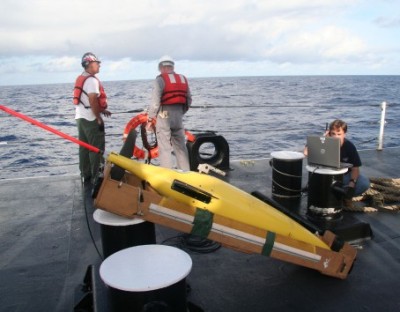iRobot has launched the latest version of Seaglider UUV, which can be outfitted with a bigger set of fairings. The latest version supports payloads of higher volumes and weight.
 Seaglider
Seaglider
The glider can now carry payloads that are double the weight that it could previously accommodate, with the volume capacity increasing to 21,000 cu.cm. Therefore, the glider can now accommodate heavier payloads and a large number of them.
The Vice President of iRobot explained that the enhancements to the Seaglider were the result of increased demand from the government research teams for greater sensing capabilities to be used in missions with a wider scope. With the enhanced payload capacity, more number of sensors could be accommodated; hence, more parameters like temperature, dissolved oxygen, and conductivity can be measured. iRobot plans to integrate the radiation sensor, current profiler and echo sounder in future versions of the Seaglider. The Seaglider has a long range capacity and high endurance which enables its operation in water from a depth of 20 m to 1,000 m. The Seaglider has achieved the feat of being the first glider to operate continuously for nine months without the need for battery replacement on a mission of 3,800 km. iRobot will be showcasing the Seaglider at the OCEANS ’11 conference which is to be held between 19-21 September in Hawaii.